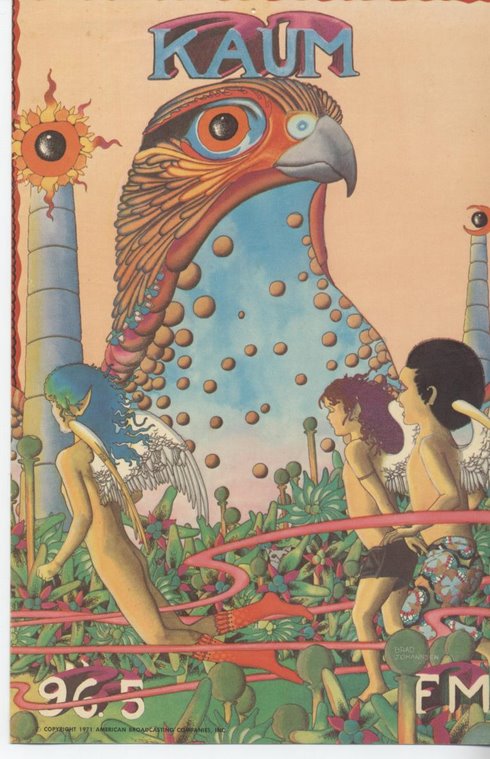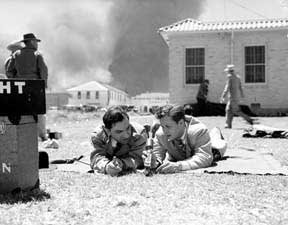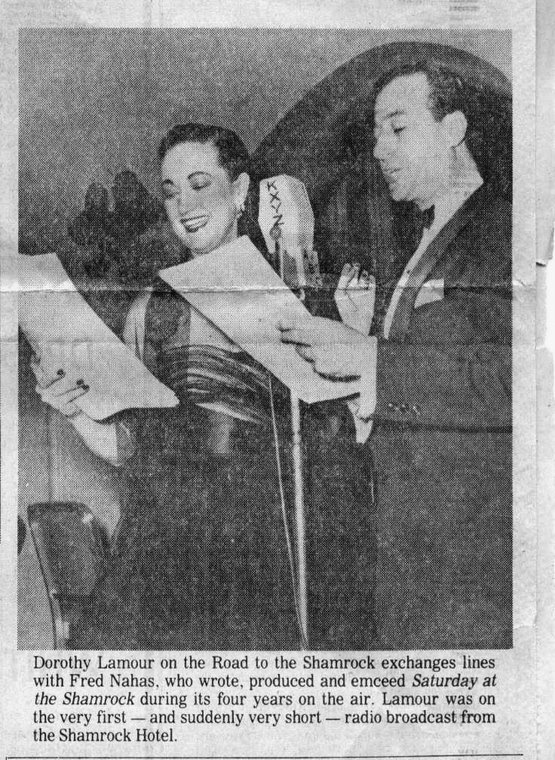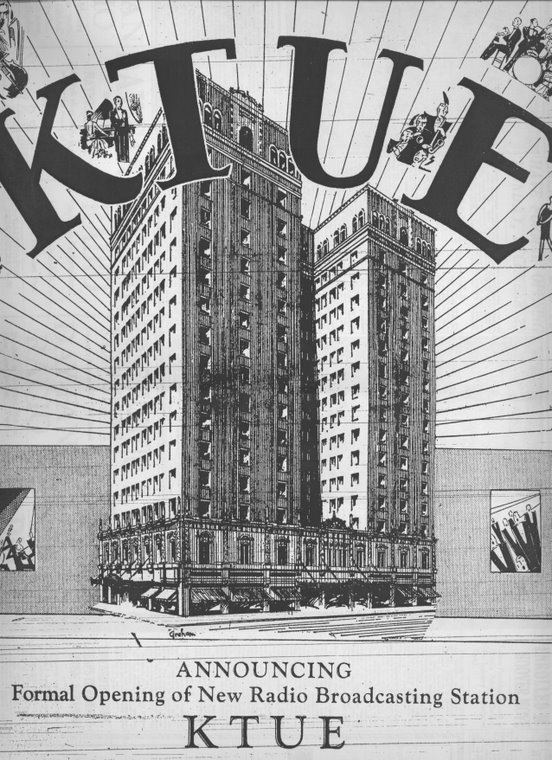Bob Horn/Philly Bandstand - Bob Adams/KILT
This is a story I only recently learned of, a small part of Houston radio history, brought to my attention by John Hill. It’s the story of how the creator of Bandstand, as in American Bandstand, wound up a deejay on KILT, then an ad agency and bar owner in Houston.
The details have been spelled out, not without contradictions, in several accounts online and in a book, Bandstand: The Untold Story, by Stan Blitz.
Briefly, Bob Horn was a popular deejay on Philadelphia’s WIP in the late 40s with a late nite program called ‘C’mon And Dance.’ He was hired away by rival WFIL to create a similar show on that station which became known as Bob Horn’s Bandstand. He also got his first taste of TV, hosting a game show that bombed.
It’s not clear who’s idea it was but the late nite radio show was given a television spinoff on WFIL-TV, also called Bob Horn’s Bandstand, which featured Horn introducing film clips of artists performing their songs and occasional interviews with artists passing through Philly. It bombed, and was taken off the air after a month and the station started running movies in its stead.
Conflicting claims have been made as to whether station management or Horn himself suggested the show be moved to a larger studio and teens invited in to dance on-air, but the idea went over with management and a new version of Bob Horn’s Bandstand premiered on WFIL-TV on October 7, 1952, heavily promoted by the radio and TV outlets and their parent, the Philadelphia Inquirer. Teens were slow to respond on the first day but by the third day, it was said there were a thousand waiting to get into the studio and Bob Horn’s Bandstand was on it’s way. The first advertiser was Earl ‘Madman’ Muntz of Muntz television fame.
Over the next four years, the show garnered as much as 60% of the daytime Philly TV audience according to some accounts and caught the attention of TV executives elsewhere. There was even talk of going national. Early on, the teens danced to artists like Joni James and Frankie Laine but as the music changed during the decade, so did the show. At times it ran as long as two hours a day, five days a week, all done live.
Then in 1956, Horn’s career hit a couple of major road bumps. First, the Philly PD, the Inquirer and WFIL-TV were conducting a month-long drive against drunk driving and Bob Horn was caught driving drunk and assessed a $300 fine. Then he was involved in a minor accident driving the wrong way on a one way street, resulting in some injuries. He was adjudged intoxicated, but not enough to impair his driving, and his insurance company paid $100,000 in claims.
In addition charges of statutory rape were brought against him by a teen-aged dancer or would be dancer on the show. Horn’s family has said there was an extortion attempt that preceded the charges and the prosecutors knew of it and cooperated in amassing the money for the payoff but took the case to court anyway. A first trial resulted in a hung jury while a second trial found Horn innocent.
But he was finished in Philly radio and TV. He had been taken off Bandstand and a producer had filled in as host for a short time while the station sifted through it’s other deejays for a replacement, finally selecting a 26 year old named Dick Clark, who had to be given a crash course in rock ‘n roll. A year after taking over for Horn, Clark pitched the show to ABC which picked it up for a trial run then took it on as a permanent fixture of their afternoon schedule, renaming the show American Bandstand.
Meanwhile, Horn was out of work when an old employer, Gordon McLendon, called. He had heard of Horn’s predicament and offered him a job at his new station in Houston. Horn accepted and made the trek across country, changing his name to Bob Adams for his new career.
According to the schedule published in the Chronicle, March 14, 1957, Bob Adams was on the air from 9pm to Midnight on the first day of the new station. In an accompanying article, Bill Weaver was quoted as naming Bob Adams as one of the new announcers but also mentioned other deejays who would be joining the staff, including Bob Horn of Philadelphia. One of the online accounts of Horn’s life says he didn’t get to Houston until July of 1957. It’s not known if the Chronicle reporter misunderstood Weaver or if someone else began the use of the name Bob Adams on KILT, but it didn’t matter much, because Horn/Adams didn’t last long as an announcer on KILT. His East Coast style didn’t sit well with KILT’s audience and he was taken off the air and put in sales before long, becoming according to one account the top producer in the KILT sales staff. It was said the audience may not have liked his sound but advertisers loved hearing his stories of how he created Bandstand.
Eventually he left the station and opened his own agency, Bob Adams Associates, credited with creating Houston’s first Midnight Madness Sale. He also bought a ranch in the country and a bar in Bellaire called the Town and Country Lounge. John Hill’s contact with Adams came when he visited the recording studio that John ran at the back of the second floor of the McLendon Building at 500 Lovett Blvd. to record spots for his clients. He preferred to use Bob Presley and Rob McLeod to voice his spots.
Bob Adams life seemed to be going very well in Houston until the summer of 1966 when he suffered a heat-stroke induced heart attack while mowing his lawn and died. He is buried at Forest Park on Lawndale where his simple grave marker includes the epitaph ‘Bandstand.’
The History of Rock website has the most thorough account of Horn’s career, including photos, reproductions of newspaper clippings concerning the trials, and a shot of the grave marker. The original article is in bold while additions to the story credited to Peter Horn, Bob Horn’s son, are in un-bold typeface.
Philadelphia’s City Paper did a story on American Bandstand for the fortieth anniversary a few years back including some references to the early incarnation of Bandstand, and this article in the Tucson Sun introduced me to Stan Blitz and his book, which I have not seen.
I’m hoping some readers of this blog who were around back then, those who were just listeners or old radio pros or advertisers, can provide some more details of his career in Houston. I wonder, for instance, if any of the local TV teen dance show hosts, Larry Kane, Bob Byron, etc., knew of his role in the creation of the genre and ever conferred with him and where his bar was.









